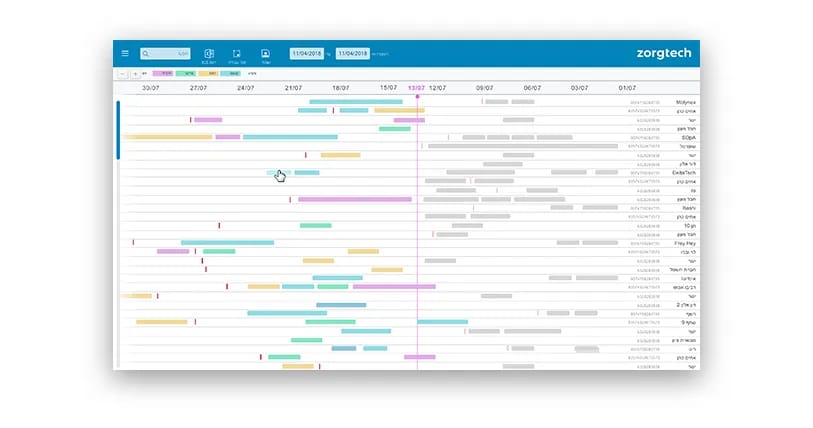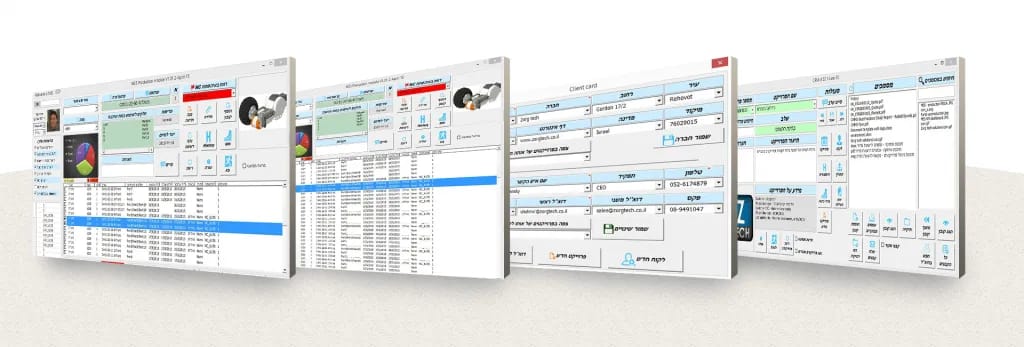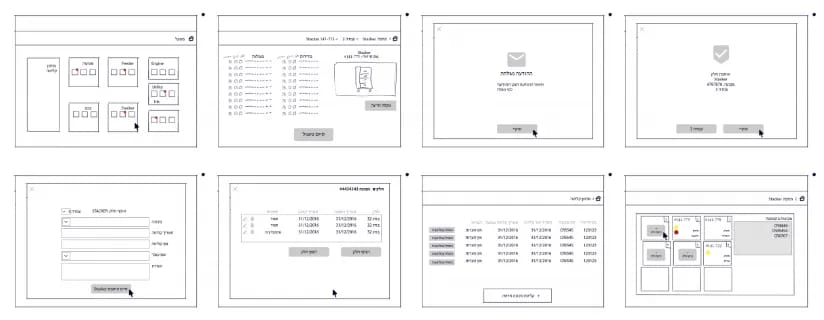Introduction
It turns out low-tech industries, factories, workshops, etc use software too! They all undergo a change called “industry 4.0” and as the name suggests — they employ software as part of their reorganisation and tendency for effectiveness.
Zorgtech has been making tailored software according to demand. Having connections in the industrial world they managed to collect some clients and created software specifically for their needs. It was a tailor made solution that had to fit the specific processes in a production line.


What was the problem
New clients were hard to get. The software looked poor. It was designed by developers, and potential users had a hard time with it (most workers on factories are non-tech guys).

Non-tech guys don’t like to learn, don’t like to work with a screen, and don’t like to do extra tasks like filling forms and clicking buttons. A cumbersome computer system was a poor match for an analog paperwork reports they had to fill on the production floor (many times skipping it altogether). It was easier for them to keep working with paper reports, same went for their managers and factory owners and CEOs.
That, of course, affected the effectiveness and the ability to analyze the production in order to optimize it. They needed a software, but a much simpler one. So the task was to give it to them.
Challenge accepted
Another challenge was the conditions in which the software development and integration has been done. There was no funding. There was no time for looking at the big picture, and there was a need to give solutions to the existing clients and new ones. Every client was different, their production line worked in a different manner and the fields themselves were various — from Hewlett Packard printers maintenance to a boutique cookie factory.

During design, I had to understand each factory processes, terminology and structure to give the UX UI solution they needed. I always emphasise and insist on such a deep dive into the matter.
Luckily, I had a front man — Vladimir, a manager and engineer with vast experience in the industrial field, who would “take me by the hand”, so to speak, and explain to me, with patience, about each factory, their products, the kind of workers, the kind of tasks and the results of their work in real life and inside of the software.
Design Process
At first, we focused on few clients and their main production floor. Then on a single screen that a worker would interact with. So the main screens were for the management and the “working screens” — for workers.

Then I went through a usual UX process of figuring out users, creating personas, mapping their needs and motivation, understanding the setup in the factory and the interaction between the units and departments.
After this we started implementing existing pre-set screens onto different clients’ projects with tweaks. This allowed the design to stay lean and development was fast because the starting point solved most of the issues.
How we invented a super-scrum process
Product design, or UX UI design, both presume an integration between the designer, developers and clients, spanning across weeks (agile and scrum). The client feedback loop is built into the design process. But in our case we had to improvise in a different manner.
Vladimir would study the field, and we designed during short online meetings, with screen sharing sessions via TeamViewer. That was the only way to present feasible results with a very tight budget and timeframe. It was not easy for me, but it worked. Integration of two minds, working simultaneously on a single task produced the design that satisfied the clients without keeping them in the loop in the short term. Their feedback took weeks, but our development took few hours each time!
How design effected sales
Sales became easier. New clients would agree to give it a try after only taking a look at a couple of screens. That never happened before with an old design. Vladimir got several new clients and we had more breathing space for keeping the design and finessing the details.
That was a total win! I was so pleased hearing about each new sale as if I made it myself.
Every product needs marketing. So a marketing kit was created with everything that was required — business cards, website, flyers, presentations etc. It’s not exactly product design but it sells the product.Every product needs marketing. So a marketing kit was created with everything that was required — business cards, website, flyers, presentations etc. It’s not exactly product design but it sells the product.
Next steps for Zorgtech
Next steps for Vladimir and his team, including myself, is to upgrade the technology of the software. Web based solution will probably be our choice.
The redesign works. It has been proven multiple times and we both are very pleased, so are the users. Now, it’s time for optimisation.

